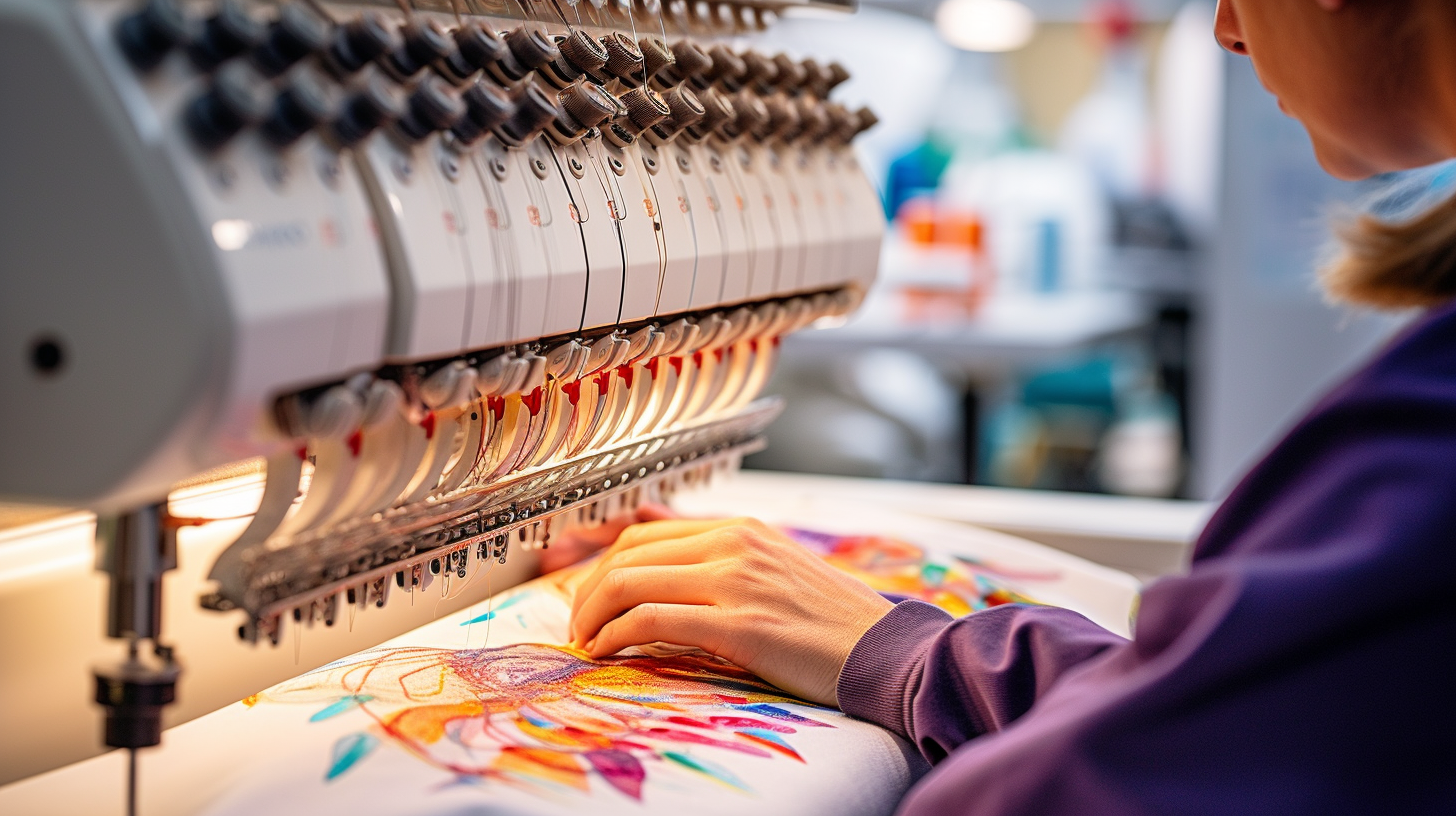Customized Digitizing for Embroidery: Customized to Your Demands
Wiki Article
Simplifying the Art of Embroidery Digitizing: Step-by-Step Guide
Embroidery digitizing is a meticulous craft that demands accuracy and creative thinking. As innovation continues to advancement, the digitization process has come to be extra obtainable, enabling lovers to bring their complex designs to life with convenience. In this overview, we will unravel the intricacies of embroidery digitizing, damaging down each action systematically to streamline the procedure and equip both beginners and skilled embroiderers alike. Remain tuned to discover just how you can streamline this intricate art kind and transform your creative visions right into wonderfully embroidered work of arts.Recognizing Embroidery Digitizing Software Program
Embroidery digitizing software application offers as a vital tool for transforming detailed designs into electronic layouts compatible with embroidery equipments, facilitating exact sewing and customization. This specific software program allows users to import different photo file styles, such as JPG or PNG, and transform them right into embroidery machine-readable styles like DST, EXP, or PES - Digitizing for Embroidery. By using attributes like stitch editing, rug choices, and string shade option, digitizing software enables individuals to manage every facet of the layout procedureMoreover, advanced embroidery digitizing software application supplies devices for developing complex designs, adjusting stitch density, and incorporating elaborate details. Individuals can additionally sneak peek the design before stitching it out, making certain accuracy and reducing mistakes. In addition, lots of software application supply automated features that assist streamline the digitizing procedure, conserving effort and time.
Comprehending the capacities of embroidery digitizing software application is important for attaining top quality lead to embroidery jobs. By understanding this tool, needlework fanatics and professionals can release their imagination and bring complex layouts to life with precision and performance.

Choosing the Right Style Data
After acquainting on your own with the capacities of needlework digitizing software program, the following crucial step in the process is selecting the right style apply for your project. Digitizing for Embroidery. When selecting a style data for embroidery digitizing, it's vital to think about the complexity of the style, the size of the end product, and the kind of fabric you will certainly be dealing withFor detailed styles with fine information, a high-resolution image or vector file is recommended to guarantee that the embroidery maker can precisely recreate the style. Additionally, the dimension of the last item plays a significant role in choosing the right style file. Bigger styles might need greater resolution data to maintain clearness and sharpness.
Additionally, the kind of material you will certainly be stitching on influences the option of layout file. Different textiles might require changes in the design data to make certain that the stitches are correctly lined up and the layout appears as intended. By meticulously selecting the best style documents based upon these factors, you can set on your own up for an effective needlework digitizing process.
Digitizing Tools and Methods
Using specialized software program and accuracy techniques, digitizing tools are vital in changing detailed layouts into embroidery-ready files. Embroidery digitizing software, such as Wilcom, Hatch, or Embrilliance, supplies the essential system to transform artwork into stitch data. These programs offer features like stitch modifying, rug choices, and text devices to make sure the layout converts flawlessly onto fabric.Among the key techniques in digitizing is creating a clear course for the needlework equipment to adhere to. This entails digitizing each component of the style with precision, identifying stitch types, densities, and directions. By using tools like digitizing tablets or software-specific plugins, embroiderers can try this out attain a high degree of precision in their digitized styles.
Moreover, grasping the art of underlay sewing is vital for creating quality embroidery. Underlay sewing supports the fabric and creates a structure for the style, ensuring that the last item is both visually appealing and durable. By recognizing these digitizing tools and techniques, embroiderers can boost their craft and bring complex designs to life with accuracy and effectiveness.
Customizing Stitch Kinds and Directions
The choice of stitch kinds can substantially influence the overall look and appearance of the embroidered style. By purposefully combining these stitch types, embroiderers can attain deepness and dimension in their designs.Furthermore, the Home Page instructions of stitches plays a vital duty in improving the aesthetic charm of the final embroidery. By exploring with different stitch angles and patterns, embroiderers can bring their layouts to life with remarkable information and intricacy.
Screening and Refining Your Digitized Layout
To ensure the accuracy and quality of your digitized design, detailed testing and refinement are essential action in the needlework digitizing process. Once you have completed the digitization of your layout, it is important to check it before proceeding with the real embroidery. Testing allows you to identify any kind of possible problems such as string breaks, stitch density troubles, or design distortions that might impact the result.
After screening, it is crucial to fine-tune your digitized style based upon the comments from the test sew-out. This might involve tweaking stitch setups, readjusting thickness, or making modifications to the total layout to accomplish the wanted result. By repeating via testing and refinement, you can adjust your digitized design to perfection prior to moving on with the real needlework procedure.
Final Thought
Finally, mastering the art of embroidery digitizing calls for a important site comprehensive understanding of the software program, selecting the appropriate design data, making use of digitizing tools and methods, customizing stitch types and instructions, and testing and improving the digitized layout. By following these steps, embroiderers can simplify the digitizing process and create top quality embroidered styles with precision and performance.Report this wiki page